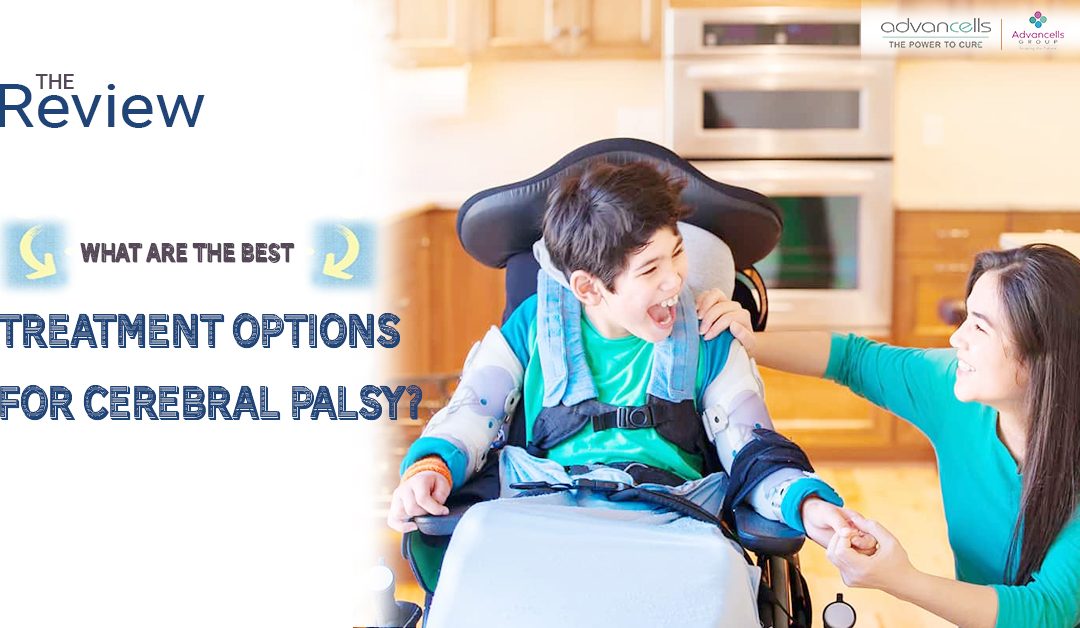Looking for Treatment for Cerebral Palsy? Cerebral Palsy (CP) is a neurological disorder, associated with loss of body movement and hampering of the muscle coordination. CP mostly affects children at their infancy but some may acquire later during first 3-5 years of child’s age due to a variety of reasons, such as oxygen deprivation at birth, high blood pressure of a mother during pregnancy, faulty labour etc. CP is often associated with abnormal brain development or damage to some parts of the brain and the symptoms of it are quite evident as children with a severe form of cerebral palsy are born with the disease. Experts believe that early detection of CP can help in early diagnosis for a better outcome.
SYMPTOMS:
- Choking, Difficulty swallowing
- Difficulty in grasping objects
- Fatigue
- Inability to focus on objects
- Inability to speak, hear and chew
- Pain
- Abnormal muscle tone
- Lack of protective reflexes, abnormal posture reflexes
DIAGNOSIS
1. Brain scans: Brain-imaging technologies can reveal areas of damage or abnormal development in the brain. These tests may include the following:
- Magnetic resonance imaging (MRI)
- Cranial ultrasound
2. Electroencephalogram (EEG): To determine if he or she has epilepsy, which often occurs in people with cerebral palsy.
3. Laboratory tests: They help in screening for genetic or metabolic problems.
4. Additional tests: For confirmation of cerebral palsy in a child some other conditions associated with CP are also assessed. These tests may identify:
- Vision impairment and hearing impairment
- Speech delays or impairments
- Intellectual disabilities
- Other developmental delays
- Movement disorders
TREATMENT FOR CEREBRAL PALSY DISEASE
The treatment goal of all the therapies of cerebral palsy is to optimize mobility, maximize the learning potential, control and manage the pain, maximize independence, enhance social and peer interactions and optimize the ability to communicate with better quality of life.
A combination of various therapies is given in the cerebral palsy treatment such as:
Physical Therapy
It is the first step in the treatment of CP disease and begins at a young age for improving the independent motor function of the child.
Physical therapy can improve:
- Strength
- Mobility
- Posture
- Balance
- Flexibility
Orthotics
To train the major muscle groups, few devices like splints, braces and casts are used in association with physical therapy. They assist children with high or low muscle tone and encourage mobility, balance and proper growth.
Occupational Therapy
To improve the fine motor skills of the children such as grasping a spoon and bringing it to the mouth, this therapy is given along with physical therapy which improves gross motor function. Mostly occupational therapy, physical therapy and speech therapy go hand in hand for a complete therapy plan.
Occupational therapy can help with activities such as:
- Writing
- Picking up small objects
- Fastening zippers
- Opening jars
- Using scissors
Speech Therapy
Cp also affects speech of the children and with this therapy, children learn how to pronounce certain words and communicate more effectively.
Speech therapists improve the issues related to speech and language skills and along with that they also help in skills like breathing and eating, because these issues involve the muscles in the mouth and face.
Recreational therapy
Some children may benefit from recreational therapies, such as therapeutic horseback riding. This type of therapy can help improve your child’s motor skills, speech and emotional well-being.
Medications
People with CP are often prescribed cerebral palsy drugs which can range from antidepressants for seizures to nerve blockers for spasticity. These drugs help in issues with the movement and the other conditions associated with cerebral palsy.
Common conditions treated with cerebral palsy medicine include:
- Seizures
- Involuntary movement
- Spasticity
- Incontinence
- Gastroesophageal (acid) reflux
Surgical or other procedures
Surgery is helpful in relieving muscle tightness and correct bone abnormalities which arise from spasticity.
These treatments include:
- Orthopedic surgery: To place the arms, hips and legs in their correct positions, these surgeries are done in CP affected children with severe contractures or deformities.
- Severing nerves: To relax the muscle and reduce pain, surgeons cut the nerves in some severe cases when other treatments haven’t helped. But such surgeries can also cause numbness.
STEM CELL TREATMENT FOR CEREBRAL PALSY
Conventionally only supportive treatments are present to temporarily relieve the pain and symptoms of cerebral palsy. Even though the damaged brain cells cannot be reversed, stem cell technology has come up as the new ray of hope and can be considered as one of the best treatment for cerebral palsy. Stem cells have the ability to give rise to healthy neurons in the damaged area and they create a microenvironment and promote secretion of hormones for faster recovery of cells.
Stem cells are undifferentiated cells of the body which can transform into any type of cells (brain cells, muscle cells, red blood cells or heart cells) to provide the healing and regenerative power to the injured or damaged part of the body. Stem cells pose an exciting therapeutic potential to deal with neuropathic pain. Bone marrow or adipose-derived stem cells differentiated to glial-like cells express a range of neurotrophic factors, which provides neuro-protection and neuro-regenerative effects. Critical in providing a protective microenvironment, neurotrophic factors are growth factors known to promote neuron development and survival. They also maintain functional integrity, promote regeneration, regulate neuronal plasticity, and aid in the repairing of damaged nerves. The stem cell therapy has evidently helped many children suffering from CP to be mentally alert and physically independent. The treatment has led to major improvements in patients’ ability to move. Many either totally or partially reacquired capabilities such as sitting, standing, lying down, and rolling. In addition, patients’ muscle tone improved significantly after the treatment.


Recent Comments